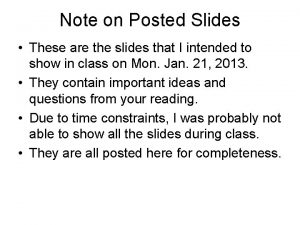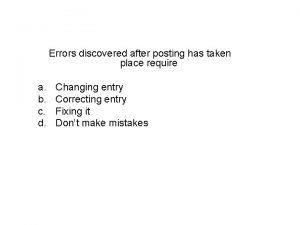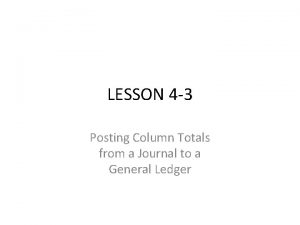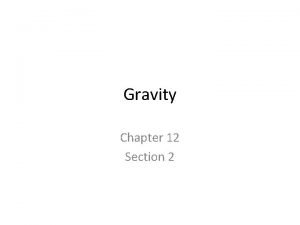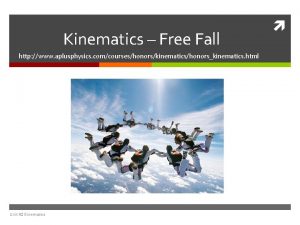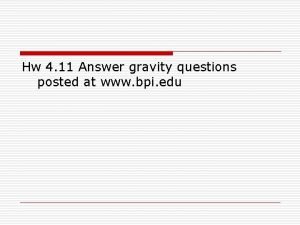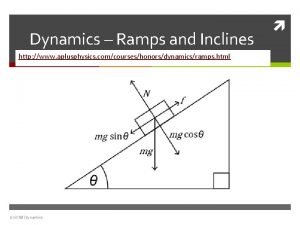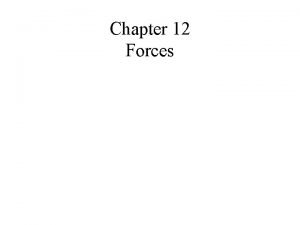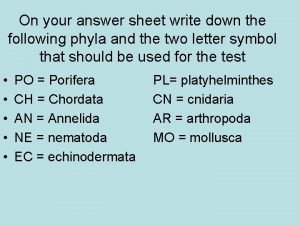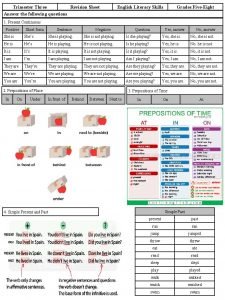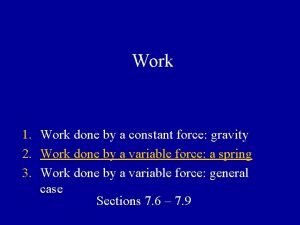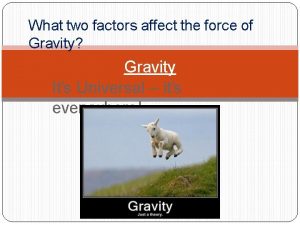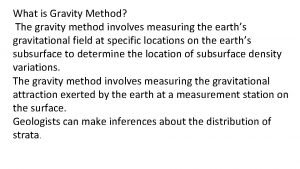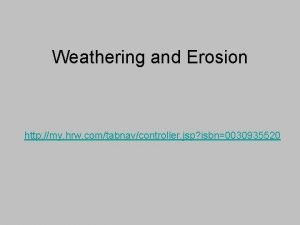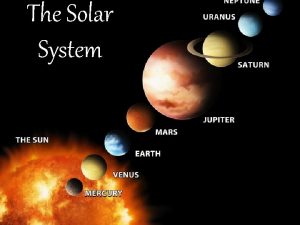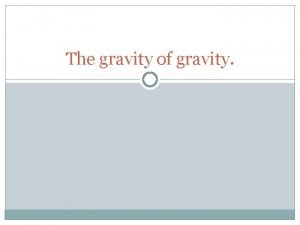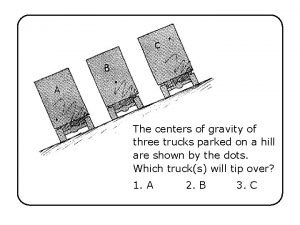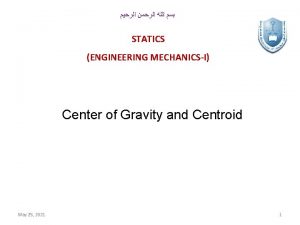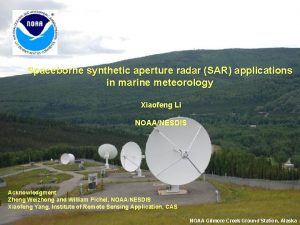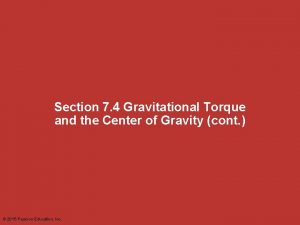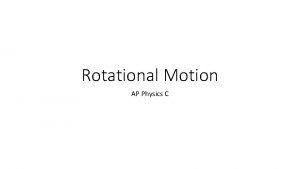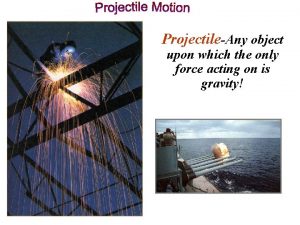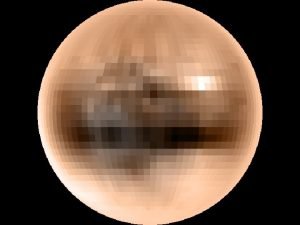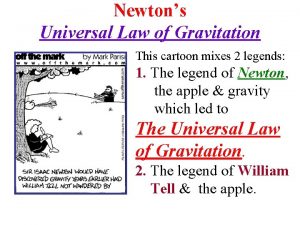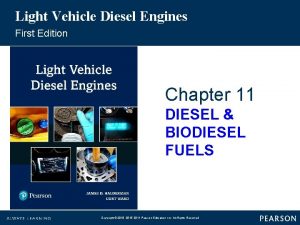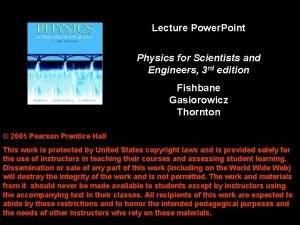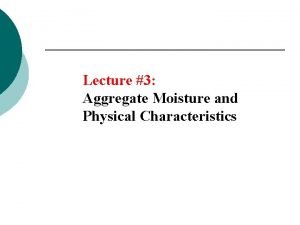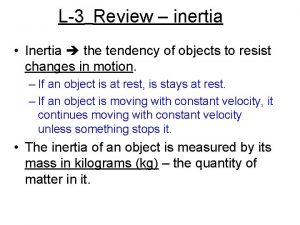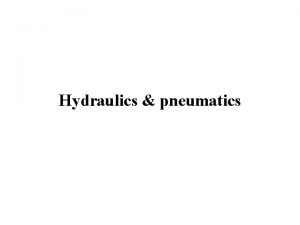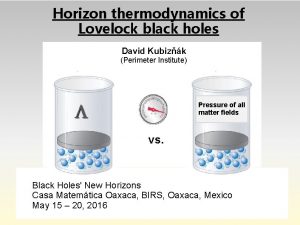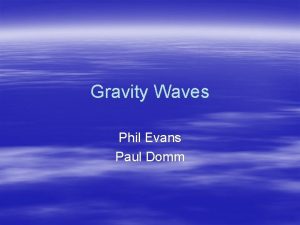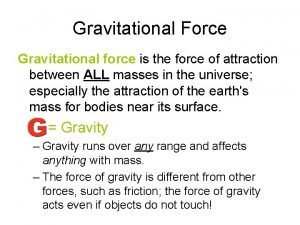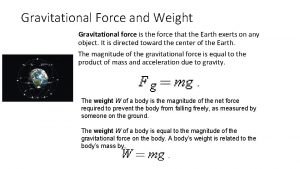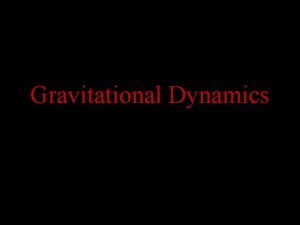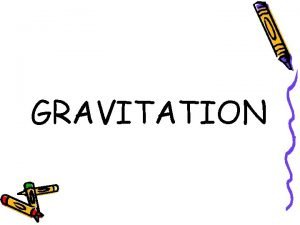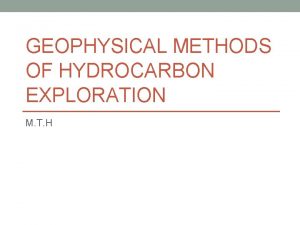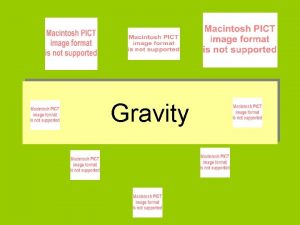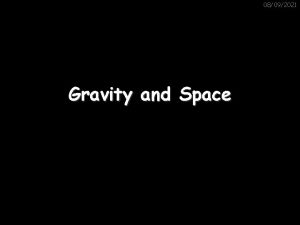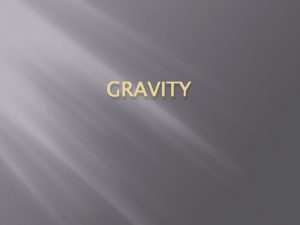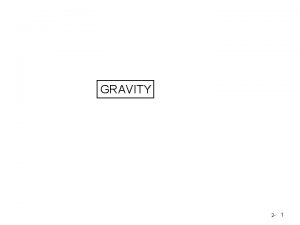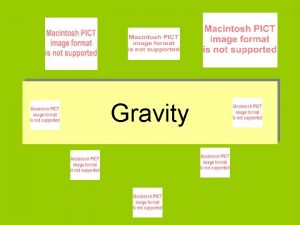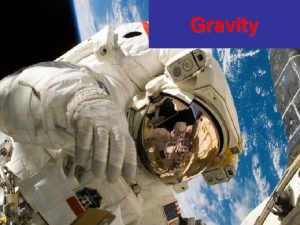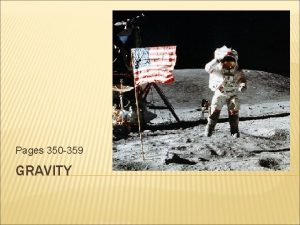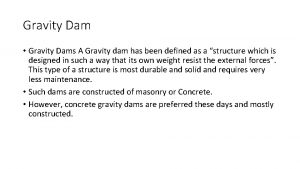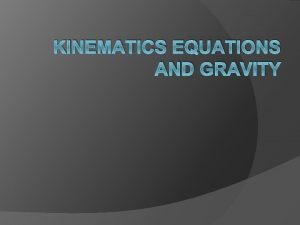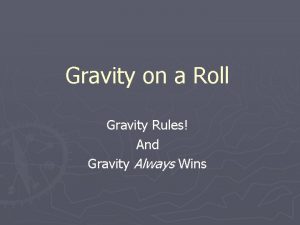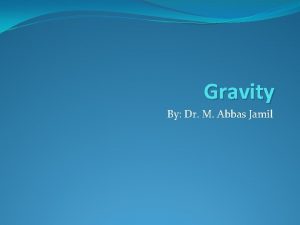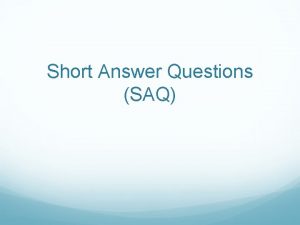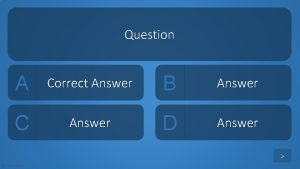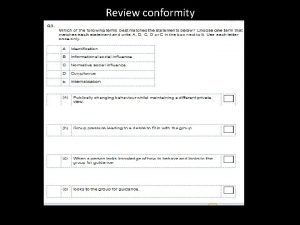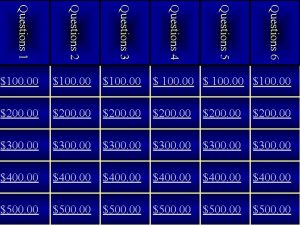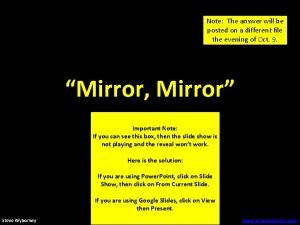Hw 4 11 Answer gravity questions posted at























































- Slides: 55

Hw 4. 11 Answer gravity questions posted at www. bpi. edu

The Motion of Planets History of Astronomy • Ptolemy • Copernicus • Galileo • Brahe • Kepler • Newton • Cavendish • Einstein

Assumptions of Early Models o Geocentric - Earth in the middle o Everything orbits the Earth o Everything moves in uniform circular motions PROBLEM: retrograde motion of the planets!

Claudius Ptolemy (87 -165) Alexandria Egypt - access to information Model based upon previous ideas Helped explain non-uniform motions Very accurate models! At least for a while….

Nicolaus Copernicus (1473 -1543) Errors building up Must be a better way! Let’s try a Heliocentric system! Explains – phases of Moon Retrograde motion Not any more accurate though


Tycho Brahe (1546 -1601) Observations of comet – beyond the Moon Observation of supernova – far away Naked eye observations of planets Accuracy through repetition Best observations of planetary positions Atmospheric refraction (bending of light) Castle, dwarf, nose, bladder

Johannes Kepler (1571 -1630) Worked for Brahe and had access to his data Took data after his death Spent years figuring out the motions of the planets Came up with… Three Laws of Planetary Motion

KEPLER’S FIRST LAW: Planets move in elliptical orbits with the Sun at one focus. Sun Perihelion Aphelion Foci (sing. Focus) Average distance from earth to Sun = 1 Astronomical Unit (1 A. U. )

KEPLER’S SECOND LAW: Planets sweep out equal areas in equal amounts of time. 1 Month (This is because they speed up as they get closer to the sun)

KEPLER’S THIRD LAW: The ratio of orbital period squared divided by orbital radius cubed is a constant! T = period of the orbit (time to go around the sun) r = orbital radius (average distance from sun T 2 / r 3 = constant Example: T= r= T 2/r 3= Mercury Earth 1 year 1 A. U. 1 !! Jupiter

Kepler’s Third Law Tm = 1. 91 yrs rm = 2. 3 x 1011 m = 1. 53 AU Te=1. 00 yrs re=1. 5 x 1011 m =1. 00 AU Tm 2/rm 3= Te 2/re 3=

Kepler’s three laws apply to ANY orbital system, but the constant depends on what you are orbiting For example, all of the planets are orbiting the sun so T 2/r 3 is the same for all of them. All of Jupiters moons are orbiting Jupiter so T 2/r 3 is the same for all of them (but not the same as for the planets).

Galileo Galilei (1564 -1642) Knew of Copernicus’s & Kepler’s work Used a telescope to look at the sky What did he see?

The Moon was an imperfect object Venus has phases

Jupiter has objects around it Saturn is imperfect The Sun is imperfect

Isaac Newton (1642 -1727) How can I explain Kepler’s laws Planets must obey my Three Laws of Motion What force makes planets curve out of a straight line? Apple falls on his head…. aha!

Newton’s Universal Law of Gravitation F=force of gravity G=constant=6. 67 x 10 -11 N-m 2/kg 2 M 1, M 2 = masses d=distance between objects (center to center)

Henry Cavendish… o Measured force of attraction between two massive objects (1797) o Used to determine the value of ‘G’ o “Weighed” the earth

Albert Einstein o Theory of general relativity can explain gravity by looking at the geometry of space-time. o Massive objects cause space itself to become distorted. o Theory explains things that Newton’s law can’t (precession of the perihelion of Mercury) o Makes very precise predictions that are later tested by experiment.

Using the Law of Gravity 1. A bowling ball (m=5. 0 kg) and a tennis ball (m=0. 30 kg) are separated by 0. 40 meters. What is the force of gravity they exert on one another? 2. The radius of Mercury is 2. 44 x 106 m and the mass is 3. 3 x 1023 kg. What is the value of ‘g’ on Mercury? 3. Earth has a mass of 6. 0 x 1024 kg and it’s radius is 6. 4 x 106 m. What is the orbital speed of a satellite that is 1, 200 km above the earth?

Deriving the law of gravity o o o SF=ma Fg=mv 2/r Fg=m(2 pr/T)2/r Fg=4 p 2 rm/T 2 Fg=(4 p 2 rm)/Cr 3 Fg=GMm/r 2 o o T 2/r 3 = C T 2=Cr 3 v=2 pr/T C=4 p 2/GM

epicycle deferent Mars Earth • Epicycles helped a little • Later models included an off-center Earth • Still not very accurate though

Wed Dec 2 o Unit 6 Test Monday (Chapter 8) o HW worksheet (14, 15, 16, 20, 22, 23)

Warmup: Name the person who… 1. Explained gravity as the curvature of space 2. Said that planets followed elliptical orbits around the sun. 3. Spent 20 -30 years making extremely precise observations of planetary positions. 4. Found the formula to calculate the gravitational attraction between any 2 spherical masses. 5. Measured the attraction of masses on Earth and determined the value of ‘G’ 6. Proposed a heliocentric model of the solar system with circular orbits and epicycles.

o The recently demoted “planet” Pluto orbits the sun at a distance of 39. 5 AU’s. How long does it take to go around the sun once?

The moon’s orbital radius is 3. 9 x 108 m and its orbital period is 27 days. 1. Use Kepler’s Third Law to determine the orbital radius of a geosynchronous satellite (T=1 day). 2. What is the orbital speed of a geosynchronous satellite? 3. Use this information with Newton’s Law of Gravity to calculate the mass of the earth.

Practice o Determine the orbital speed of a satellite that orbits the earth at an altitude of 2, 000 km. o Mercury has a radius of 2. 44 x 106 m and a mass of 3. 30 x 1023 kg. If an astronaut on Mercury’s surface threw a rock upward at a speed of 15 m/s, how high would it go? o Halley’s comet orbits the sun once every 74 years. Find its average orbital distance in AU.

Wed Dec 17 Hw> (p 174) 2 -4 (p 181)14 (p 192) 61, 67 Warmup: Mars has a mass of 6. 4 x 1023 kg and orbits the sun at a distance of 2. 3 x 1011 m. 1. If the sun exerts a force of 1. 6 x 1021 N on Mars, what is the mass of the sun? 2. At what speed does Mars orbit the sun? (SF=ma, a=v 2/r) 3. How long does it take Mars to orbit the sun? Express your answer in Earth years.

o o o SF=ma a=v 2/r v=2 pr/T Fg=mv 2/r GMm/r 2=mv 2/r GM/r=v 2 v=(GM/r)1/2 GM/r=4 p 2 r 2/T 2 T 2/r 3=4 p 2/GM

41. No, the force the moon exerts on the earth is the SAME as the force the earth exerts on the moon! (Newton’s Third Law)

46. g=GM/r 2 g. J/ge=(GMJ/r. J 2)/(GMe/re 2) = (MJre 2)/(Mer. J 2) = (300 Mere 2)/[Me(10 re)2] =300/100=3 g. J = 3 ge = 30 m/s 2

53. m 1=5. 9 kg m 2=0. 47 kg r=0. 055 m Fg=? Fg=GM 1 M 2/r 2 = 6. 1 x 10 -9 N

55. m 1=70 kg m 2=50 kg r=20 m Fg=? Fg=GM 1 M 2/r 2=5. 8 x 10 -10 N

72. m=7 x 1020 kg r=5 x 105 m Fg=? mg=GMm/r 2 g=GM/r 2=0. 187 N/kg Fg=mg=16. 8 N

80. r=3. 9 x 108 m m. E=6. 0 x 1024 kg Fg=GMEMm/r 2 Fg=1. 9 x 1020 N mmoon=? Mm =(Fgr 2)/(GME) =7. 2 x 1022 kg

Monday, December 15 o HW> (p 191 -2) 41, 46, 53, 55, 72, 80 o Quiz on Friday


Warmup o A merry-go-round makes one revolution every 20 seconds. What is its angular speed in degrees/s? In radians/s? o If the radius of the ride is 4. 0 meters, what is the centripetal acceleration of a person on the edge? o How many revolutions will the merry-goround make as it decelerates uniformly to rest in 1 minute?

Warmup o P 81 1 -5 o Today: n Circuit schematics n Power in electric circuits

Physics 12/9/04 THUR: o Discuss lab results o Kepler’s Laws o Newton’s Universal Law of Gravitation o HW 2. 12 (195) 32 -36

Monday December 11 o. Test tomorrow!! o. Today: Circular motion continued o. Warmup: 1. Is a car going around a corner accelerating? Explain. 2. Is a planet going around the sun accelerating? Explain 3. According to Newton’s Second Law of Motion, what causes an object to accelerate? 4. What force(s) cause the object’s in 1&2 to accelerate?

Wednesday December 13 Hw 2. 14 Read 8. 1 (p 184)1. 1, 1. 2, 1. 3 (193) 1 -8 Today: Kepler’s Laws Warmup: A 50 kg kid is riding a merry-go-round. Her horse is 4. 0 meters from the center and is traveling at 2. 8 m/s. What is her acceleration? In what direction does the net force on the girl act? 2. A go cart navigates a circular track with a radius of 60 meters. It completes one lap every 45 seconds. How fast is it traveling. What is the magnitude of its acceleration? 3. The earth is 1. 5 x 1011 m from the sun. Calculate the speed our planet is traveling. (Assume a circular orbit) o o o 1.

Thursday December 14 o HW 15> (180 -1) 1 -4 (194 -5) 17, 18, 31, 34, 37 o Today: Planetary motion and gravity (cont. )

Remember… Law #1. Law of Inertia - Objects do whatever they are currently doing unless something messes around with them. Conclusion: since planets don’t move in straight lines, something is messing with them!

SECOND LAW: Accelerations are caused by forces. Fnet=ma For circular motion a=v 2/r Conclusion: Whatever physical agent keeps planets in orbit must obey this law.

THIRD LAW: For every action there is an equal and opposite reaction. Conclusion: If the sun pulls on the earth, the earth must exert an equal force on the sun! Question: Could the force that pulls objects down to the earth be the same force that keeps planets in their orbit?

Answer: yes, but only if the force gets weaker the further away you go. o Newton figured out just how this gravitational force would need to behave in order to comply with Kepler’s Laws and his own laws of motion. o Because this force could describe gravity on earth and in heaven (space) he called it….

Monday December 18 HW 16> (195) 41, 42, 45, 47, 48 (196)51, 52 Today: Using the Law of gravity Warmup: What is the weight of a 110 kg astronaut standing on the moon (The moon’s mass is 7. 3 x 1022 kg, and its radius is 1. 74 x 106 m). 2. Halley’s comet takes 76 years to orbit the sun. What is its average orbital distance? 3. Describe Cavendish’s experiment. What was the significance of his results? o o o 1.

Practicing circular motion o Tarzan (mass=80 kg) swings from a vine that is 6. 0 meters long. At the bottom of his swing the tension in the vine is 1100 N. How fast is he moving? o What is the gravitational attraction between Tarzan and Jane (mass=40 kg) when they are 0. 5 meters apart? o Mercury has a mass of 3. 2 x 1023 kg and a radius of 2. 4 x 106 m. How much would a 0. 6 kg hammer weigh on Mercury’s surface. If you dropped the hammer, how long would it take to fall 3. 0 meters?

Tuesday December 19 Hw 2. 17> (194) 11, 12, 21 -26, 29 (196) 54 -56 Warmup: The dwarf planet Pluto has a mass of 1. 5 x 1022 kg. It’s radius is 1. 15 x 106 m and it orbits the sun at an average distance of 5. 91 x 1012 m. A)Find the strength of the gravitational field (g) on the surface of Pluto. B)If a projectile was launched horizontally at a speed of 15 m/s from a Plutonian cliff that was 18. 0 m tall, how far from the base of the cliff would it land? C)Find the orbital period of Pluto in its orbit around the sun WITHOUT using Kepler’s third law. (The mass of the sun is 2. 0 x 1030 kg). State your answer in both seconds and years.

More!!! o According to the table on page 204, Kepler’s constant for our solar system is approx. 3 x 10 -19 s 2/m 3. Use this information to “weigh” the sun. o A 600 kg car goes around a curve with a 1000 meter radius at a speed of 12 m/s. What is it’s centripetal acceleration? What is the minimum frictional coefficient that will keep it from sliding off of the road? o The earth’s moon makes one orbit every 27 days and orbits at a distance of 3. 84 x 108 meters. What is the orbital radius of a “geosynchronous” satellite which makes one orbit every 24 hours? How fast is the satellite moving?

Wednesday December 20 o TEST TOMORROW!! (Ch 7. 2, 8. 1, 8. 2) o Do you remember: n ac=v 2/r v=2 pr/T SF=mv 2/r n Contributions of: Ptolemy, Copernicus, Galileo, Brahe, Kepler, Newton, Cavendish, Einstein n Kepler’s 3 Law’s of Planetary Motion n Fg=GM 1 m 2/d 2 (universal law of gravity)

Practice & Review 1. Briefly list the contributions of each person to our understanding of gravity and planetary motion: A) Kepler B) Cavendish C) Galileo D) Newton E) Einstein F) Brahe 2. A cave man swings a 2. 0 kg rock around his head on the end of an 80 cm rope. The tension in the rope is 60. 0 N. Find the following: A) The centripetal acceleration B) The speed of the rock C) How long does it take him to swing the rock around 12 times? 3. Find the maximum speed a car can go around an unbanked curve with a radius of curvature of 90 meters and a coefficient of friction of 0. 25.

Practice & Review o NASA decides to place a satellite in orbit 300 km above the surface of Mars. (Mmars=6. 4 x 1023 kg, rmars=3. 40 x 106 m) A) What is the strength of the gravitational field (g) at this location? B) What is the orbital speed and period of the satellite at this location? C) A martian moon is discovered in orbit at 3 times the orbital radius of of the satellite. Use Kepler’s third law to determine its period.
 Gravity for dummies and dummies for gravity equations
Gravity for dummies and dummies for gravity equations A food handler is reheating commercially processed cheese
A food handler is reheating commercially processed cheese Tabletop foodservice equipment on legs
Tabletop foodservice equipment on legs Impulse examples
Impulse examples Errors discovered after an entry is posted
Errors discovered after an entry is posted Which column totals of a journal are posted?
Which column totals of a journal are posted? Folio bucket in front office
Folio bucket in front office Look mom i posted it again
Look mom i posted it again Chapter 12 section 2 gravity answer key
Chapter 12 section 2 gravity answer key Kinematics defining motion answer key
Kinematics defining motion answer key Ucm gravity worksheet answer key
Ucm gravity worksheet answer key Aplusphysics answer key
Aplusphysics answer key Second law of newton
Second law of newton Answer the following on your answer sheet
Answer the following on your answer sheet In your answer sheet answer the following questions
In your answer sheet answer the following questions Apush short answer questions
Apush short answer questions Work in pairs discuss these questions
Work in pairs discuss these questions The work done by gravity during the descent of a projectile
The work done by gravity during the descent of a projectile What two factors determine the force of gravitational pull?
What two factors determine the force of gravitational pull? Gravity method of geophysical exploration
Gravity method of geophysical exploration Gravity and friction
Gravity and friction How does ice affect weathering
How does ice affect weathering Normal specific gravity of urine
Normal specific gravity of urine Gravity and inertia study jams
Gravity and inertia study jams What is gravity
What is gravity The centers of gravity of the three trucks
The centers of gravity of the three trucks Center of gravity statics
Center of gravity statics Problems on centroid in engineering mechanics
Problems on centroid in engineering mechanics Specific gravity formula
Specific gravity formula Atmospheric gravity waves
Atmospheric gravity waves Gravitational torque
Gravitational torque Ap physics rotational motion
Ap physics rotational motion Tangential speed
Tangential speed Forces acting on a projectile
Forces acting on a projectile What is neptunes gravity
What is neptunes gravity Centre of gravity in physical education
Centre of gravity in physical education The universal law of gravitation written by isaac
The universal law of gravitation written by isaac Gravitational field strength equation
Gravitational field strength equation Pertanyaan tentang penentuan lokasi industri
Pertanyaan tentang penentuan lokasi industri International migration definition ap human geography
International migration definition ap human geography Gravitational potential energy vs kinetic energy
Gravitational potential energy vs kinetic energy Vegetable maturity indices
Vegetable maturity indices Specific gravity of diesel
Specific gravity of diesel Torque direction rule
Torque direction rule Bulk specific gravity formula
Bulk specific gravity formula Weight equals mass times gravity
Weight equals mass times gravity Lpg specific gravity
Lpg specific gravity Uses of mercury barometer
Uses of mercury barometer Einstein black hole equation
Einstein black hole equation Forceparcel
Forceparcel Gravity vehicle
Gravity vehicle Definition of gravitational force
Definition of gravitational force Four forces
Four forces Gravitational dynamics
Gravitational dynamics Gravitational phenomena
Gravitational phenomena Gravity method of geophysical exploration
Gravity method of geophysical exploration



